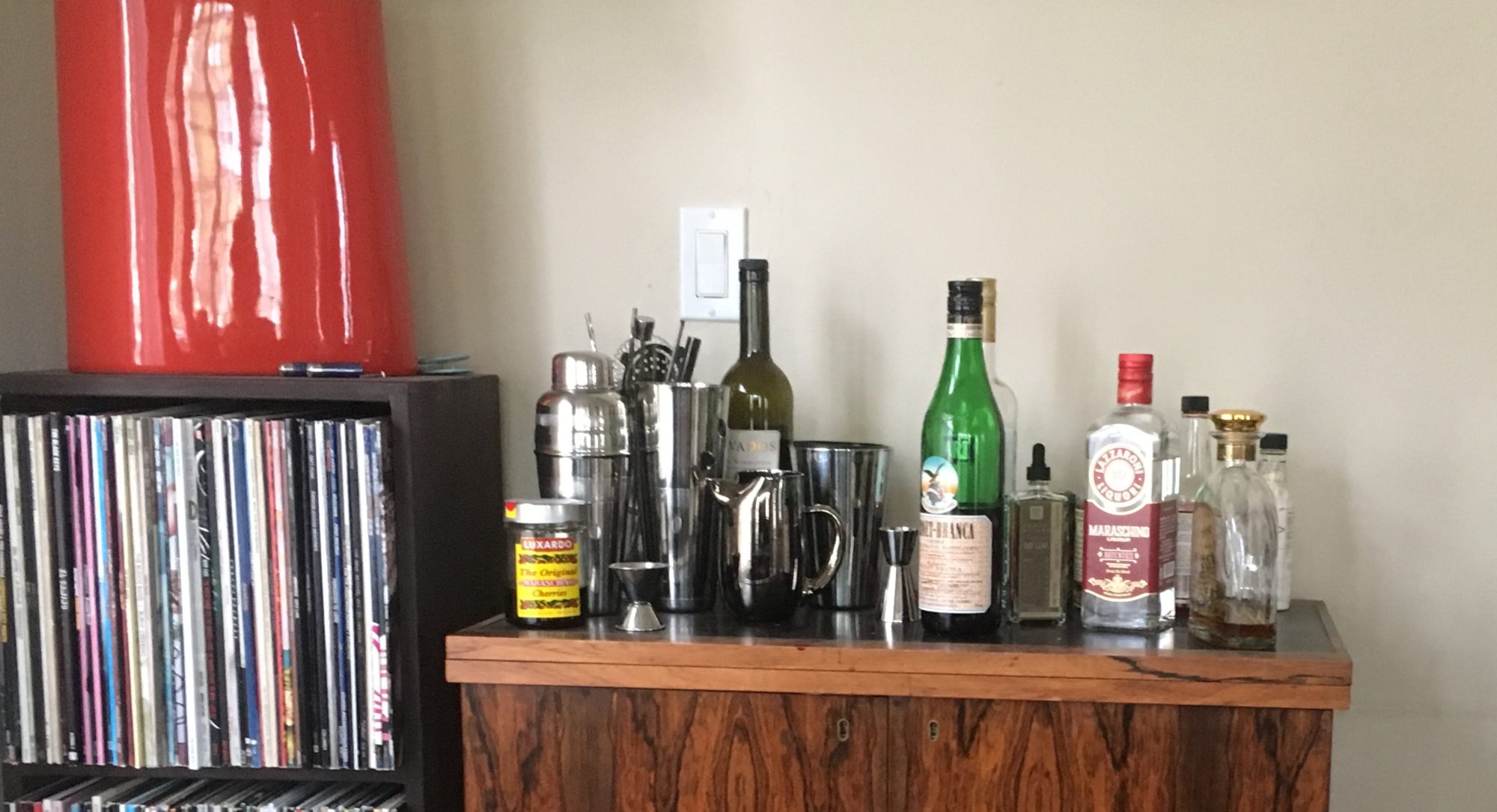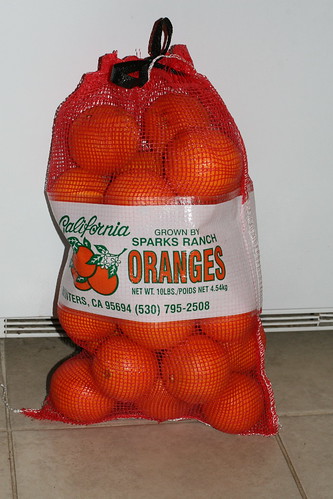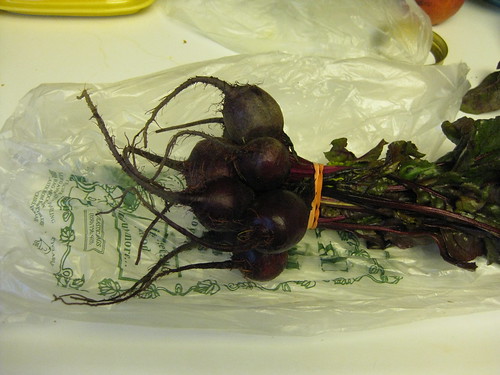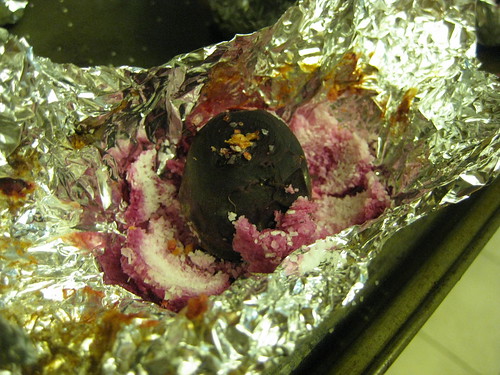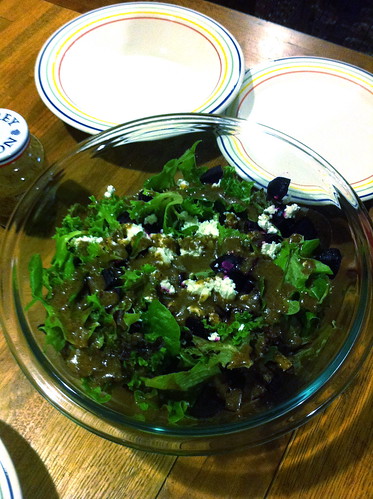The French are, in a word, sérieux about where things come from. Whether it’s wine, cheese or lentils, there are rules—sorry, laws—and they must be heeded. I like rules. Rules are good. Rules beget constraints and constraints beget challenges and challenges beget intrigue. I like intrigue, too.
Calvinball is an example of what’s great about rules. Calvin Ball is fun, intriguing if you will, not because any action is possible, but because any rule is possible. Changing the rules changes the game, and infinite rules provide infinite possibility.
At last week’s Farmer’s Market, I was hipped to another rule the French have. It concerns chicken, namely the Poulet de Bresse. The Poulet de Bresse has blue feet and is the only chicken with AOC status. It is raised in one region under strict guidelines. The appellation is protected to the point that one is forbidden from removing the live birds, their eggs or even dressed birds from the country. What does this have to do with California?
Poulet Bleu is an American equivalent to the Poulet de Bresse. It was bred in British Columbia in collaboration with California producers, and introduced in 2004. We purchased one from Cache Creek Meat Co., where they are raised as free roaming animals. Ours weighed about two and a half pounds without the head and feet. It’s a slightly slenderer bird than a typical U.S. chicken, with the characteristic blue coloring visible on the tips of the drumsticks.
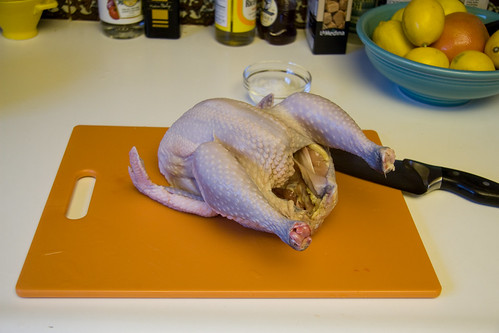
We were cautioned that indelicate cooking might dry the bird out, so I selected a recipe I was confident would maintain plenty of moisture. Turning to the Silver Spoon, I noted their recipe for Pollo Arrosto, which calls for cooking the whole bird in a large pot atop a layer of carrots, onion, celery and rosemary.
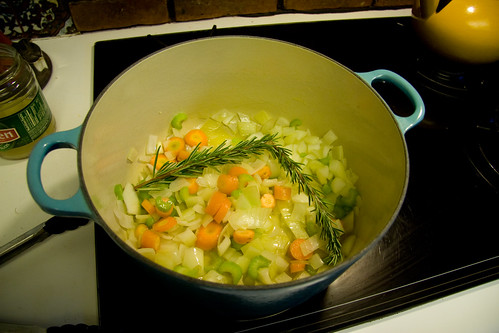
I followed their recipe quite faithfully, with only the addition of a Meyer lemon in the bird’s cavity and a little white wine in the pot along with the vegetables.
The recipe calls for searing the bird on all sides before reducing the heat to cook it slowly. In the future, I’ll try to use a little more oil, because the skin stuck and tore a bit. It didn’t impact the final product in the least, but for appearances sake, intact skin would be nice.

Speaking of the final product, this was one tasty, tasty bird. I’m usually 100% dark meat when it comes to my poultry preferences, but the white meat on the Poulet Bleu was absolutely transcendent—light, juicy and flavorful. We will definitely return to the Poulet Bleu in the future.
We served the bird alongside some butter roasted orange cauliflower and carrots.
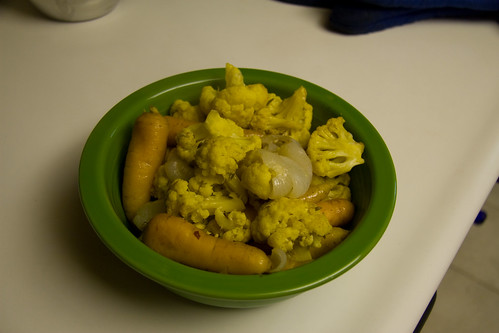
Please check out all the pictures.
